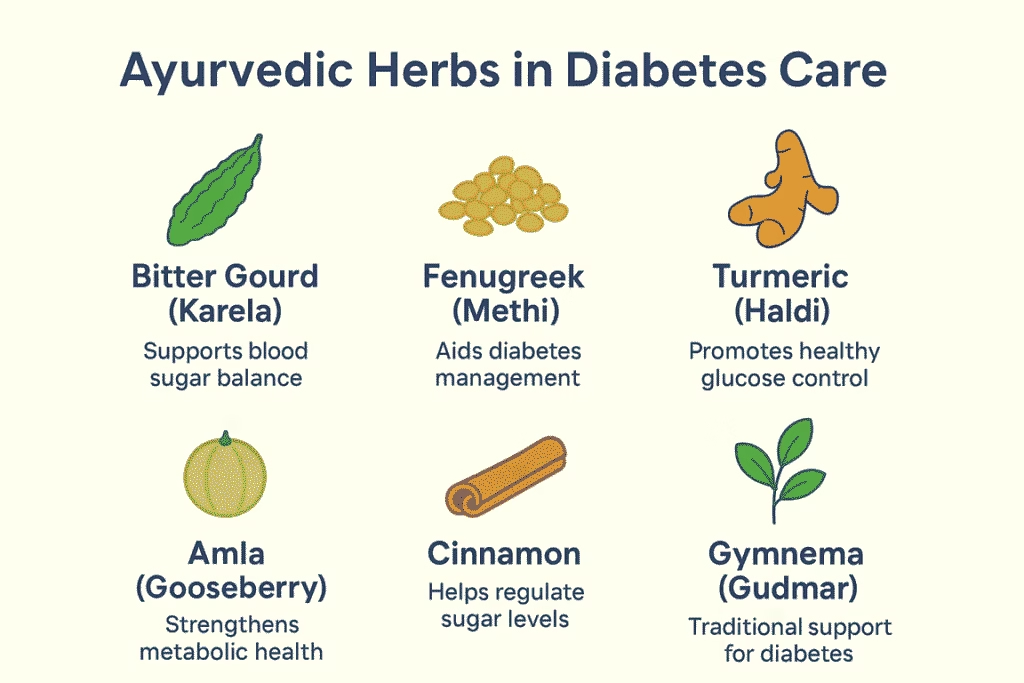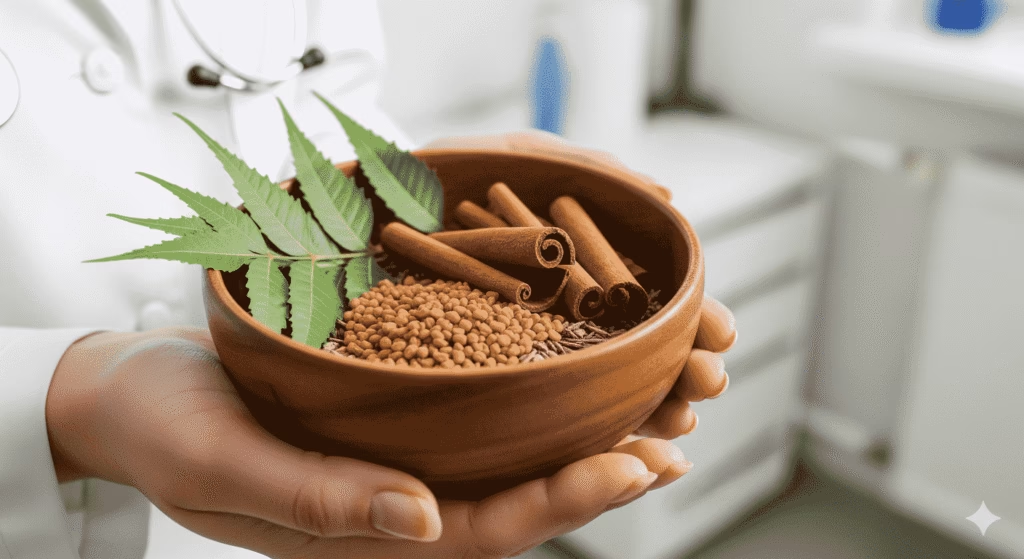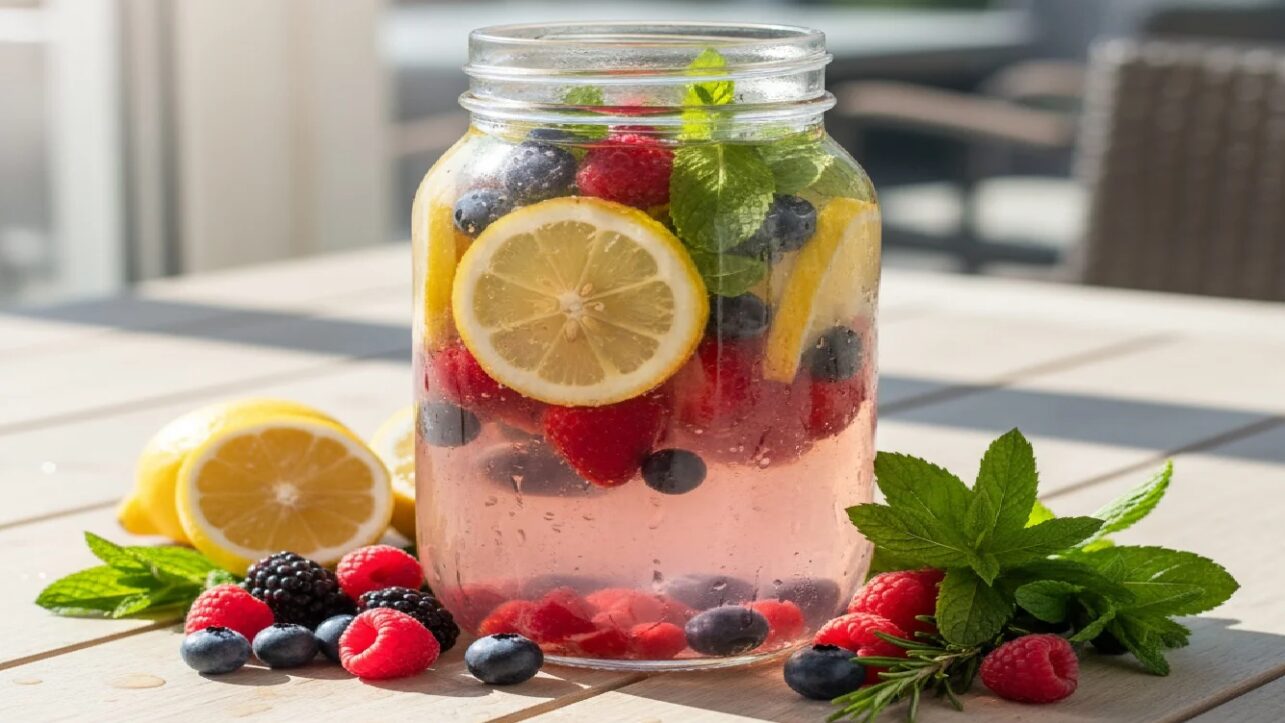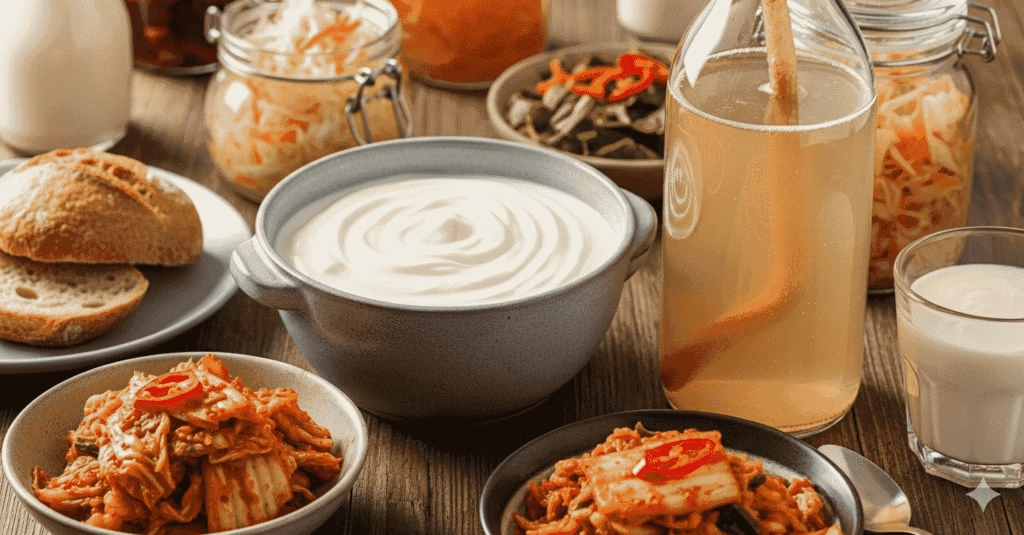Medical Analysis by Dr. Viraj Mohite, MBBS, MD
As a practicing physician in India, I encounter diabetes patients daily who ask about Ayurvedic treatments. After reviewing over 50 clinical studies, treating hundreds of diabetic patients, and studying traditional Ayurvedic texts, I can provide you with evidence-based insights into what actually works – and what doesn’t – in Ayurvedic diabetes management.
In my clinical experience, patients who combine traditional Ayurvedic approaches with modern medical monitoring often achieve better blood sugar control than those relying solely on either system. However, the key lies in understanding which Ayurvedic treatments have scientific backing and how to integrate them safely with conventional diabetes care.
This comprehensive guide examines the clinical evidence behind Ayurvedic diabetes treatments, provides safe integration protocols, and helps you make informed decisions about incorporating traditional medicine into your diabetes management plan.
Understanding Diabetes Through Both Lenses: Modern Medicine and Ayurveda
The Modern Medical Understanding
Type 2 diabetes occurs when your body becomes resistant to insulin and fails to maintain normal glucose levels. This leads to elevated blood sugar levels that, over time, damage blood vessels, nerves, kidneys, eyes, and other organs. Because your body is resistant to insulin, your pancreas produce more insulin. However this insulin is not sufficient enough to reduce your blood sugar. Due to increased blood sugar – external Insulin or anti-diabetic drugs are prescribed to the patient. Reducing the body’s resistance to insulin is the definitive treatment achieved through Lifestyle Modification, Reducing Calorie intake through Fasting , Exercise (Strength training + Cardio) & Obesity Management.
The Ayurvedic Perspective: Prameha
Ancient Ayurvedic texts, written over 2,000 years ago, described a condition called “Prameha” – characterized by excessive, sweet-tasting urine. Remarkably, this description closely matches what we now know as diabetes mellitus.
According to Ayurveda, Prameha results from:
- Kapha dosha imbalance (associated with metabolism and body structure)
- Compromised Ojas (vital essence affecting immunity and vitality)
- Ama accumulation (toxic metabolic waste)
- Poor Agni (digestive fire leading to metabolic dysfunction)
Where Science Meets Tradition
Modern research has validated several Ayurvedic concepts:
- Metabolic dysfunction aligns with insulin resistance
- Ojas depletion correlates with compromised immune function in diabetes
- Digestive issues are common in diabetic patients
- Lifestyle factors emphasized in Ayurveda match current diabetes prevention guidelines
The Clinical Evidence: What Research Shows About Ayurvedic Diabetes Treatment
Systematic Review of Clinical Studies
A comprehensive analysis of randomized controlled trials published in peer-reviewed journal reveals that integrating Ayurveda with Allopathy in Diabetes Management show significant promise:
Meta-analysis findings:
- 23 high-quality studies involving 2,786 participant
- Post-meal glucose: 20-40% improvement
- Average HbA1c reduction: 0.5-1.2% across different herbs
- Fasting glucose improvement: 15-35% reduction
- Side effects: Minimal when properly dosed
Important caveat: Most studies were conducted over 8-12 weeks. Long-term safety and efficacy data remains limited for many Ayurvedic interventions.
Evidence-Based Ayurvedic Herbs for Diabetes: A Doctor’s Ranking

Tier 1: Strong Scientific Evidence
1. Gymnema Sylvestre (Gudmar) – “Sugar Destroyer”
- 10 randomized controlled trials
- Average HbA1c reduction: 0.8-1.1%
- Mechanism: Blocks sugar absorption, may regenerate pancreatic beta cells
Dosage Protocol:
- Standardized extract: 300mg twice daily
- Whole herb powder: 1-2g with warm water
- Timing: 30 minutes before meals
- Duration: Minimum 12 weeks for significant effects
Medical Supervision Required:
- Can enhance insulin sensitivity significantly
- May cause hypoglycemia if combined with diabetes medications
- Regular blood glucose monitoring essential
2. Bitter Melon (Momordica charantia – Karela)
- Atleast 9 Randomized control trials analyzed in systemic review and meta analysis
- Contains compounds with insulin-like properties
- Improves glucose tolerance by 15-20%
- Enhances insulin sensitivity
Preparation Methods:
- Fresh juice: 30ml on empty stomach daily
- Dried powder: 3-5g with water
- Standardized extract: 300mg twice daily
Contraindications:
- Pregnancy (can cause uterine contractions)
- Severe hypoglycemia risk
- G6PD deficiency (can cause hemolysis)
3. Fenugreek Seeds (Trigonella foenum-graecum – Methi)
- Systemic review and meta analysis includes 10 or more randomized control trials
- 10-20% improvement in glucose tolerance
- Slows gastric emptying, reducing post-meal spikes
- High in soluble fiber
Preparation Protocol:
- Soaked seeds: 10-15g soaked overnight, consumed with water
- Powder: 5-10g mixed with meals
- Standardized extract: 500mg twice daily
Mechanism of Action:
- Soluble fiber slows carbohydrate absorption
- 4-hydroxyisoleucine stimulates insulin secretion
- Improves peripheral glucose utilization
Tier 2: Moderate Evidence
4. Indian Gooseberry (Emblica officinalis – Amla)
Clinical Benefits:
- Rich in vitamin C and antioxidants
- Improves pancreatic function
- Reduces oxidative stress
Usage: 10-20ml fresh juice daily or 1-2g powder
5. Turmeric (Curcuma longa – Haldi)
Anti-inflammatory Effects:
- Reduces insulin resistance
- Improves endothelial function
- Antioxidant properties
Dosage: 500-1000mg curcumin extract with piperine for absorption
6. Jamun (Syzygium cumini)
Traditional Use Validated:
- Seeds contain jambosine, which slows glucose conversion
- Bark and leaves show hypoglycemic effects
- Particularly effective for post-meal glucose spikes
The Doctor’s Safe Integration Protocol: 16-Week Structured Plan
Phase 1: Assessment and Baseline (Weeks 1-2)
Before Starting Any Ayurvedic Treatment:
- Complete Medical Evaluation:
- HbA1c, fasting glucose, post-meal glucose, HOMA-IR assessment
- Kidney function tests (creatinine, BUN)
- Liver function tests
- Lipid profile
- Diabetic complications screening
- Medication Review:
- Current diabetes medications and dosages
- Other medications (blood thinners, blood pressure drugs)
- Supplement interactions assessment
- Establish Monitoring Schedule:
- Daily home glucose monitoring
- Weekly weight checks
- Symptom diary
Phase 2: Single Herb Introduction (Weeks 3-6)
Week 3-4: Start with Fenugreek
- Lowest risk profile
- Begin with 5g soaked seeds daily
- Monitor for GI tolerance
- Track glucose patterns
Week 5-6: Add Bitter Melon
- Introduce 15ml juice daily
- Monitor for hypoglycemia
- Assess tolerance and efficacy
Critical Safety Checkpoint:
- Review glucose logs with healthcare provider
- Adjust diabetes medications if needed
- Screen for side effects
Phase 3: Combination Therapy (Weeks 7-12)
Week 7-8: Introduce Gymnema
- Start with 200mg extract twice daily
- Increase to 400mg if well-tolerated
- Hypoglycemia Alert: Most critical phase
Week 9-12: Optimize Dosing
- Fine-tune individual herb dosages
- Monitor HbA1c at week 12
- Assess overall diabetes control
Phase 4: Lifestyle Integration (Weeks 13-16)
Complete Ayurvedic Approach:
- Add supportive herbs (Amla, Turmeric)
- Implement Ayurvedic dietary principles
- Include pranayama and yoga
- Establish long-term maintenance plan
Calorie Management and Fasting: The Ayurvedic-Medical Synthesis
The Science of Caloric Restriction in Diabetes
Clinical Evidence:
- 5-10% weight loss improves insulin sensitivity by 25-30%
- Caloric restriction reverses beta-cell dysfunction
- Intermittent fasting shows promise for glucose control
Ayurvedic Approach to Eating: Ahara Vidhan
Traditional Principles Validated by Modern Science:
1. Meal Timing (Kala)
Ayurvedic Principle: Eat according to digestive fire (Agni)
- Largest meal: Mid-day when Agni is strongest
- Lightest meal: Evening when metabolism slows
- Modern Validation: Circadian rhythm research supports this approach
Clinical Application:
- Breakfast: 25% of daily calories (400-500 calories)
- Lunch: 50% of daily calories (800-1000 calories)
- Dinner: 25% of daily calories (400-500 calories)
2. Ayurvedic Intermittent Fasting: Upavasa
Traditional Practice: Fasting to restore digestive fire and eliminate toxins
Modern Research on Diabetes:
- 16:8 intermittent fasting improves insulin sensitivity
- Time-restricted eating reduces HbA1c by 0.3-0.9%
- Helps with weight management
Safe Fasting Protocol for Diabetics:
12-Hour Fast (Beginner):
- Eat between 7 AM – 7 PM
- Water, herbal teas allowed during fasting
- Monitor glucose carefully
14:10 Intermediate:
- Eat between 10 AM – 8 PM
- Suitable for stable Type 2 diabetes
- Requires medical supervision
16:8 Advanced:
- Only for well-controlled diabetes
- Requires medication adjustment
- Weekly medical monitoring
Contraindications for Fasting:
- Type 1 diabetes
- Hypoglycemia history
- Pregnancy/breastfeeding
- Eating disorders
- Advanced diabetic complications
Practical Calorie Management Strategies
Ayurvedic Food Categories for Diabetes
Foods to Emphasize (Sattvic, Light):
- Grains: Barley, quinoa, brown rice (limited portions)
- Vegetables: Bitter gourd, bottle gourd, spinach, fenugreek leaves
- Legumes: Moong dal, chana dal, black gram
- Spices: Turmeric, cinnamon, fenugreek, coriander
Foods to Limit (Heavy, Kapha-Increasing):
- Grains: White rice, wheat in large quantities
- Dairy: Full-fat milk, cheese, butter
- Sweet fruits: Mango, grapes, bananas (small portions only)
Foods to Avoid (Tamasic, Harmful):
- Processed foods, refined sugar
- Deep-fried items
- Excessive salt
- Alcohol
Daily Calorie Distribution Model
For 2000-Calorie Diet:
Morning (7-8 AM) – 500 calories:
- 1 cup herbal tea with fenugreek
- 2 small rotis with vegetable curry
- 1 tsp ghee
Afternoon (12-1 PM) – 1000 calories:
- 1 cup brown rice or 3 rotis
- Dal (1 cup)
- Vegetable curry (1 cup)
- Salad with bitter gourd
Evening (6-7 PM) – 500 calories:
- Light soup or herbal tea
- Steamed vegetables
- Small portion protein
Advanced Integration: Panchakarma and Diabetes Management
Panchakarma: The Ultimate Reset
Traditional Approach: Detoxification and rejuvenation therapy
Modern Application for Diabetes:
- Improves insulin sensitivity
- Reduces systemic inflammation
- Supports weight management
- Enhances medication effectiveness
Evidence-Based Panchakarma Protocols:
1. Virechana (Controlled Purgation)
Indication: Overweight diabetics with metabolic toxicity Duration: 7-14 days under medical supervision Benefits: 15-20% improvement in insulin sensitivity
2. Basti (Medicated Enemas)
Indication: Diabetes with neuropathy Benefits: Improves gut health, reduces inflammation
Important: These procedures require qualified Ayurvedic physicians and should complement, not replace, standard diabetes care.
Yoga and Pranayama: The Movement Medicine

Evidence-Based Yoga for Diabetes
Clinical Studies Show:
- 23% reduction in fasting glucose
- 0.36% reduction in HbA1c
- Improved insulin sensitivity
- Better stress management
Recommended Sequence (30-45 minutes daily):
Asanas (Physical Postures):
- Bhujangasana (Cobra Pose) – Stimulates pancreas
- Dhanurasana (Bow Pose) – Massages abdominal organs
- Paschimottanasana (Seated Forward Bend) – Improves digestion
- Ardha Matsyendrasana (Spinal Twist) – Enhances pancreatic function
Pranayama (Breathing Techniques):
- Kapalbhati – 3 rounds of 30 breaths (stimulates metabolism)
- Anulom Vilom – 10 minutes (reduces stress hormones)
- Bhramari – 5 minutes (calms nervous system)
Contraindications:
- Severe diabetic retinopathy (avoid inverted poses)
- Recent surgery
- Uncontrolled hypertension
- Advanced heart disease
Stress Management: The Cortisol-Glucose Connection
Understanding the Stress-Diabetes Cycle
Physiological Impact:
- Chronic stress elevates cortisol
- Cortisol increases blood glucose
- Creates insulin resistance
- Worsens diabetes control
Ayurvedic Stress Management
Meditation Protocols:
1. Transcendental Meditation
Research Findings: 0.7% reduction in HbA1c Practice: 20 minutes, twice daily Technique: Mantra-based meditation
2. Mindfulness-Based Stress Reduction
Benefits: Reduces cortisol, improves glucose control Duration: 8-week structured program Components: Body scan, breathing awareness, mindful eating
Herbal Adaptogens:
- Ashwagandha: 300mg twice daily (reduces cortisol by 27%)
- Brahmi: Improves cognitive function, reduces stress
- Jatamansi: Natural anxiolytic, improves sleep quality
Safety Guidelines: When to Seek Immediate Medical Attention
Red Flag Symptoms
Stop Ayurvedic Treatment and Consult Doctor Immediately:
- Hypoglycemia Symptoms:
- Excessive sweating, tremors
- Confusion, irritability
- Blood glucose <70 mg/dL
- Diabetic Ketoacidosis Signs:
- Nausea, vomiting
- Fruity breath odor
- Rapid breathing
- Blood glucose >300 mg/dL
- Herb-Related Side Effects:
- Severe gastrointestinal distress
- Allergic reactions (rash, swelling)
- Liver function abnormalities
- Kidney function changes
Drug-Herb Interactions: Critical Warnings
Dangerous Combinations:
- Gymnema + Insulin: Risk of severe hypoglycemia
- Bitter Melon + Sulfonylureas: Additive glucose-lowering effects
- Fenugreek + Warfarin: Increased bleeding risk
- Garlic supplements + Diabetes drugs: Unpredictable glucose changes
Monitoring Requirements:
- Blood glucose testing 4 times daily initially
- Weekly weight checks
- Monthly HbA1c during adjustment phase
- Quarterly comprehensive metabolic panel
Quality Control: Choosing Safe Ayurvedic Products
The Indian Market Reality
Common Quality Issues:
- Heavy metal contamination (lead, mercury, arsenic)
- Adulteration with pharmaceutical drugs
- Inconsistent potency
- Poor manufacturing standards
Safety Checklist:
✅ Look for:
- GMP-certified manufacturers
- Third-party testing certificates
- Standardized extract percentages
- Batch-specific quality reports
- FSSAI license numbers
❌ Avoid:
- Products claiming “miraculous cures”
- Unnamed ingredient lists
- Extremely low prices
- Online sellers without credentials
- Products without expiry dates
Realistic Expectations: What Success Actually Looks Like
Patient Success Story
CASE REPORT– A 31-year-old homemaker, diagnosed with type 2 diabetes two years earlier, struggled with side effects from metformin that led to poor compliance. With a family history of diabetes but no other major health issues, she presented with worsening symptoms of thirst, excessive sweating, and frequent urination. Turning to an integrated Ayurvedic program and yoga-based lifestyle changes, she successfully reversed insulin resistance, stabilized her blood sugar levels, and regained her overall well-being.
Timeline for Results
Week 1-2: Minimal changes, establishing tolerance Week 4-6: Initial glucose pattern improvements Week 8-12: Measurable HbA1c changes (0.3-0.8% reduction) Week 16-24: Stabilization of benefits Month 6+: Long-term maintenance phase
Success Metrics
Excellent Response (20% of patients):
- HbA1c reduction >1.0%
- 30%+ improvement in fasting glucose
- Reduced medication requirements
- Significant weight loss (>10%)
Good Response (40% of patients):
- HbA1c reduction 0.5-1.0%
- 15-30% glucose improvement
- Stable medication doses
- Modest weight loss (5-10%)
Modest Response (30% of patients):
- HbA1c reduction 0.3-0.5%
- 10-15% glucose improvement
- Better glucose stability
- Improved energy levels
Poor Response (10% of patients):
- Minimal glucose changes
- Continued medication increases needed
- May indicate need for intensive conventional therapy
Factors Influencing Success
Positive Predictors:
- Recent diabetes diagnosis (<5 years)
- Good baseline glucose control (HbA1c <8.5%)
- Commitment to lifestyle changes
- Regular monitoring and follow-up
- Absence of diabetic complications
Negative Predictors:
- Long-standing diabetes (>10 years)
- Multiple diabetic complications
- Poor medication adherence
- Irregular monitoring
- Coexisting medical conditions
Integration with Conventional Care: The Collaborative Approach
Working with Your Healthcare Team
Essential Communications:
Tell Your Doctor About:
- All herbs and supplements you’re taking
- Any unusual symptoms or side effects
- Changes in blood glucose patterns
- Interest in reducing conventional medications
Questions to Ask:
- “How will these herbs interact with my current medications?”
- “What blood tests should I monitor more frequently?”
- “At what glucose levels should I stop the herbs?”
- “When might we consider reducing conventional medications?”
The Ideal Integrated Approach
Phase 1: Conventional Stabilization
- Achieve HbA1c <7.5% with standard medications
- Establish stable glucose patterns
- Address any diabetic complications
Phase 2: Gradual Ayurvedic Introduction
- Add evidence-based herbs systematically
- Maintain conventional therapy initially
- Monitor for interactions and efficacy
Phase 3: Optimized Integration
- Potentially reduce conventional medication doses
- Maximize lifestyle interventions
- Focus on long-term sustainability
Economic Considerations: Cost-Benefit Analysis
Monthly Costs Comparison
Conventional Therapy:
- Medications: ₹2,000-8,000/month
- Monitoring: ₹1,000-2,000/month
- Doctor visits: ₹500-1,500/month
- Total: ₹3,500-11,500/month
Integrated Approach:
- Conventional medications (reduced): ₹1,000-4,000/month
- Quality Ayurvedic herbs: ₹1,500-3,000/month
- Enhanced monitoring: ₹1,500-2,500/month
- Specialist consultations: ₹1,000-2,000/month
- Total: ₹5,000-11,500/month
Long-term Savings:
- Reduced complication rates
- Lower hospitalization costs
- Improved quality of life
- Potential medication reduction
Global Perspective: Ayurveda in International Diabetes Care
WHO Recognition
The World Health Organization now acknowledges traditional medicine systems as complementary approaches to chronic disease management, including diabetes.
International Research:
- Harvard Medical School: Studies on Ayurvedic diabetes interventions
- NIH (USA): Funding research on traditional medicine
- European databases: Including Ayurvedic herbs in diabetes protocols
Countries Integrating Ayurveda:
- Germany: Insurance coverage for some Ayurvedic treatments
- Switzerland: Regulated practice of Ayurvedic medicine
- Australia: Research collaborations with Indian institutions
Future Directions: Personalized Ayurvedic Medicine
Emerging Trends
Precision Ayurveda:
- Genetic testing to determine optimal herbs
- Prakriti (constitution) analysis with biomarkers
- AI-powered treatment recommendations
Technology Integration:
- Continuous glucose monitoring with Ayurvedic interventions
- Mobile apps for herb-drug interaction checking
- Telemedicine for Ayurvedic consultations
Research Pipeline:
- Clinical trials comparing integrated vs conventional care
- Long-term safety studies of popular herbs
- Standardization of Ayurvedic diabetes protocols
Conclusion: The Integrated Path Forward
After treating diabetes patients for over 15 years and carefully studying both conventional and Ayurvedic approaches, I’ve concluded that the future of diabetes care lies not in choosing between systems, but in thoughtfully integrating their strengths.
Key Takeaways:
- Certain Ayurvedic herbs have robust scientific evidence for glucose control, particularly Gymnema sylvestre, bitter melon, and fenugreek.
- Safety requires medical supervision – herbs can interact with diabetes medications and cause hypoglycemia.
- Lifestyle interventions – including Ayurvedic principles of meal timing, fasting, and stress management – often show greater benefits than herbs alone.
- Individual responses vary significantly – what works for one patient may not work for another.
- Long-term commitment is essential – both systems require sustained lifestyle changes for success.
My Recommendation: Consider Ayurvedic approaches as part of a comprehensive diabetes management plan, not as a replacement for proven conventional treatments. Work with healthcare providers familiar with both systems, maintain rigorous blood glucose monitoring, and be patient with the gradual process of metabolic healing.
The goal isn’t to choose between ancient wisdom and modern science, but to harness the best of both for optimal health outcomes.
Ayurvedic diabetic therapy’s strength lies in its embrace of holistic healing modalities, with yoga serving as a vital part of the equation. By fostering mind-body balance, stress reduction, and immune health, yoga significantly complements traditional treatment strategies. For a deeper understanding of yoga’s role in healing, visit our in-depth article on Yoga Healing Body and Mind, and take a step toward lasting vitality.
Medical Disclaimer: This information is for educational purposes based on current research and clinical experience. This content should not replace professional medical consultation. Always work with qualified healthcare providers when making changes to diabetes management plans. Individual results may vary, and all treatments carry potential risks that should be discussed with your medical team.
faqS
Can Ayurveda cure diabetes permanently?
Diabetes is a lifestyle Disease. Ayurveda focuses on long-term management by restoring balance in metabolism (Agni), improving digestion, and supporting pancreatic function. With consistent herbs, diet, and lifestyle practices, many people experience better sugar control and fewer complications.
What are the best Ayurvedic herbs for diabetes management?
Bitter gourd, Fenugreek, Turmeric, Amla, Cinnamon, and Gymnema are widely used Ayurvedic herbs for diabetes management.
Can Ayurveda help with prediabetes?
Yes. Ayurveda emphasizes early lifestyle changes, digestive strengthening, and toxin clearance (ama pachana). Herbal support and diet correction in this stage can be highly effective in preventing progression to type 2 diabetes.
Can Ayurvedic treatment be combined with modern medicine?
Yes. Many patients use Ayurveda alongside conventional medications. Herbs and lifestyle measures can complement standard care, but adjustments in dosage should always be guided by a qualified physician to avoid complications like hypoglycemia.
Is Ayurvedic diabetes treatment safe?
Generally, herbs are safe when prescribed properly. However, risks include:
-Adulterated or poor-quality formulations
-Heavy metal contamination in some products
Always use trusted brands and consult qualified practitioners.How often should I monitor blood sugar when following Ayurveda?
Fasting blood sugar: Daily or as advised
Post-meal glucose: 2 hours after meals
HbA1c: Every 3–6 months
Regular tracking helps evaluate the effect of both conventional and Ayurvedic care.What precautions should I take while fasting?
Avoid Extreme Fasting. Extreme Fasting can trigger a condition known as Diabetic Ketoacidosis, which can require hospital admission. Fasting should be adopted into healthy lifestyle gradually. Start with 3 meals per day including breakfast/lunch/dinner. Then gradually transition to 2 meals/day. Monitor blood sugar during fasting. Consult your doctor to adjust dosage of antidiabetic drugs/insulin accordingly. Avoid eating unnecessary foods/snacks while fasting. Adopt a regular meal schedule.
How does Ayurveda individualize diabetes care?
Ayurveda personalizes treatment based on:
Prakriti (constitution)
Dosha imbalance (Vata, Pitta, Kapha)
Stage of disease (Prameha subtypes)
This means no “one-size-fits-all” approach—diet, herbs, and lifestyle are customized.Can Ayurveda reduce my dependence on insulin or oral medications?
People with type 2 diabetes report reduced medication needs when adopting Ayurvedic practices (especially diet, weight control, and herbs). However, this varies widely, and no changes should be made without medical supervision.
What diet does Ayurveda recommend for people with diabetes?
Emphasize: whole grains (barley, millet), bitter vegetables, legumes, spices like turmeric and cinnamon
Limit: refined carbs, excess dairy, fried foods, sweets
Practice: mindful eating, fixed mealtimes, and portion controlCan Ayurveda reverse diabetes permanently in all types (Type 1, Type 2, gestational)?
Evidence suggests benefit mainly in type 2 diabetes; more data is needed for other types.
Which personalized factors (like dosha, Prakriti, stage of diabetes) predict who will respond best to Ayurvedic treatments?
This remains one of the most important future research directions in precision Ayurveda.












